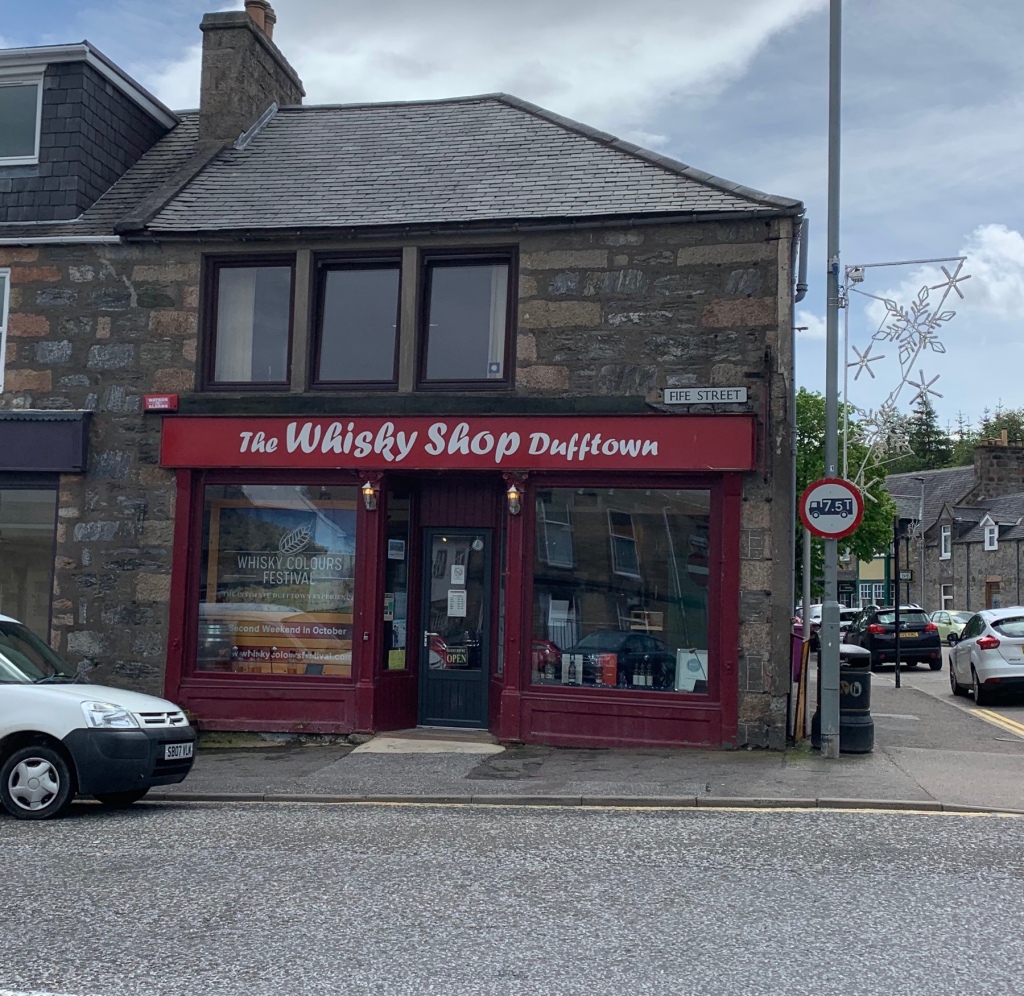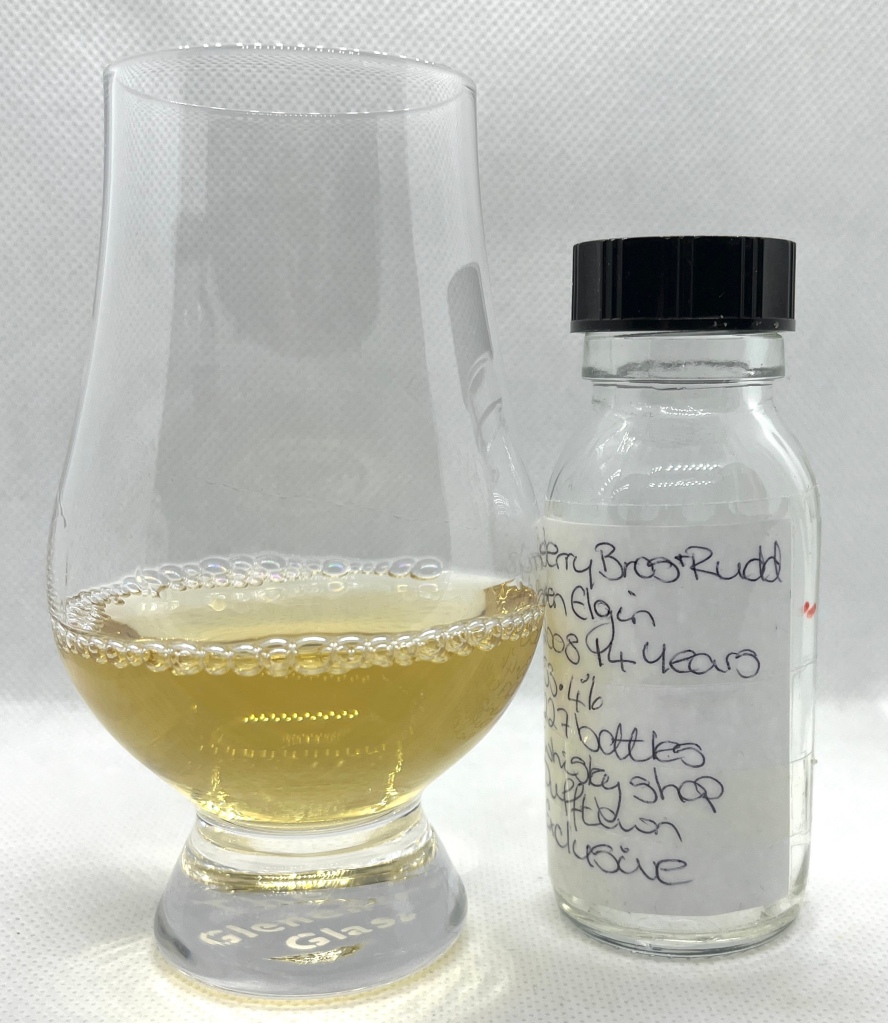Taste Review 151 – Glen Elgin 14 (Whisky Shop Dufftown Exclusive)
Some things come out of the blue when you are least expecting it. Like a review from myself when I’ve been silent for so long. It’s mainly because of work and family life, but also there is an aspect of I couldn’t be bothered. For those of you who followed my twitter account, I guess that my disappearance was a bit of a surprise, but it had to happen. I’m ambivalent about Twitter now, whether or not the Scotty’s Drams account re-appears is still in the balance.
I was recently at work in Newcastle during a dry dock period for my ship when I got an e-mail that told me I had a delivery on the way. Confusion triumphed as I thought I had been good, and hadn’t ordered any more whisky. I searched through my inboxes to see if I had any receipt from unknown purchases, yet nothing showed up. I was eventually able to deduce that the delivery was from Whisky Shop Dufftown. Even more curious, as I knew that I hadn’t ordered anything from them, often preferring to call in when passing. Was I to be the recipient of somebody else’s whisky? A quick message exchange revealed I was going to lucky, as I was to receive a sample of a Whisky Shop Dufftown Exclusive bottling.
While this has been provided solely to say thank you for my supporting that shop, and was not intended to be reviewed, (I certainly haven’t been asked to promote this item), I have to be open about its source. Followers of this blog should remember that I don’t like being given samples explicitly to review, and have turned down offers in the past. However, I haven’t ever reviewed a Glen Elgin so have decided to take this one as my first. So in disclosure, this review will count as a promotion under ASA rules.

Glen Elgin is a whisky that you don’t see a lot of, but there is a good reason for that – it is mostly used for blends, predominately it is used in the White Horse Blend. The distillery is located in the Morayshire hamlet of Fogwatt, just off the A941 on the stretch between Rothes and Elgin. There is a cluster of distilleries in the region, with Benriach, Longmorn, Glenlossie and Mannochmore being close by. Glen Elgin distillery was founded in 1898 by William Simpson and James Carle, producing its first spirit by 1900, but was short lived, closing under 6 months later and had intermittent production until 1906 when purchased by JJ Blanche. I wonder if Glen Elgin was a victim of the Pattison crash? It was next purchased by Scottish Malt Distillers in 1930, and starts producing spirit to be used in the White Horse blended whisky. The distillery continued production, with expansion in 1964 to increase the number of stills. The distillery closed in 1992 for three years so refurbishment could take place. In 2001, Glen Elgin appeared in the Flora and Fauna series to boost the range which had started 10 years previously with 22 original distilleries. Disposal of some of the distileries had depleted the range so 4 other bottlings were added. The others were Glen Spey, Auchroisk and Strathmill, with Glen Elgin leaving the Flora and Fauna with the release of a proprietary bottling, which I believe was released around 2004.
I have a little issue with Diageo Malt whisky. While they do make acceptable whisky, they just don’t seem to go beyond the bare minimum, with many of their bottlings not even making the enthusiast basic minimum of 46%. Sadly 43% is as much as you get in a core range, meaning that it’s probably been chill filtered and takes away some of the tasty goodness. What really galls me is the spirit they have at cask strength is usually pretty good. I’d like to refer this to my visit to Oban distillery, where we were given a sample of a 9 year old straight from the cask – delicious. It was a bit of a let down to be given the bog-standard 14 year old at the end of the tour, along with the obligatory push about the Games Of Thrones whisky on offer.
It wasn’t a one off – last year I made peace with my bank account and paid close to £120 including shipping for an Oban 10 year old Special Release. Yet again, another cracker of a whisky at a cask strength, albeit the price was a bit salty for a 10 year old, even if it was at a higher ABV. Going back further in my blog, I can recall the Allt Dour bought from Robertsons of Pitlochry. Distilled at Blair Athol distillery, its another Diageo release that needs to be bottled by somebody else to make the most of the distillate that is produced.
Independent bottlers are often the source of good whisky, often being a lot cheaper than original bottlings and you are more likely to find the benchmark standards of Non-Chill filtration, no added colour, age or vintage statements and a decent ABV. Having independent bottlers means that you can buy a cask and have it as an exclusive release, without having to rely on the whims of the producer. Such is this that arrived at Scotty’s Drams HQ from the Whisky Shop Dufftown (WSD). Bottled by Berry Brothers and Rudd, a bottler with a good reputation, the latest WSD exclusive is from Glen Elgin, distilled in 2008, making it 14 years old and bottled at a healthy 53.4%, with no added colour or chill filtering This is the sort of whisky that enthusiasts should be demanding.
The note accompanying the delivery read “It may not be to your taste, but it is whisky” was quite amusing, but never a truer word as been said in jest. Let’s see if the independent bottling trumps any original Glen Elgin I’ve had in the past.

Glen Elgin 14 – Whisky Shop Dufftown 2023 exclusive (Berry Bros. & Rudd)
Region -Speyside Age -14 y.o Strength -53.5% ABV Colour -Pale Gold (0.3) Cask Type – 1st Fill Bourbon Colouring -No Chill Filtered -No Nose – Honey and citrus. Lemon curd, creamed coconut. Toffee note becomes noticeable after adding water and the floral note also becomes more apparent to me. Palate – Gentle arrival considering strength, as I initially tasted without water. Slightly waxy with citrus dominant. Grapefruit, pineapple and a gentle peppery heat. WIth water, it became more oily, and there was a taste of green grape that was past its best before date. Finish – Medium – long. Slightly astringent – oak spices, honey, pepper heat continues, with the heat being slightly increased with the addition of water.
Thoughts
Quite surprising. I didn’t get many of the notes that the producer gave, but I got quite a few of the notes that were found by the Whisky Shop Dufftown, which for me is unusual. Bourbon maturation isn’t really my jam; I prefer something finished by a fortified wine cask of some description, but as WSD pointed out, it may not be my taste, but it was whisky. While it didn’t grab me immediately, over the course of the evening that I nursed the sample, I warmed to it. The biggest plus point for me was the subtle delivery of a higher abv, which didn’t leave my throat feeling like a towering inferno.
This was a limited bottling of only 227 bottles and is reasonably priced for a Single Cask 14 year old whisky at £83. While I am sure there are some people will moan at the price, lets put it into perspective of a 10 year old Diageo Special Release at £120 including delivery. Diageo charge the earth for their ‘limited’ SR editions, yet here is a rarely seen Glen Elgin that is single cask and gave me equal or more supping pleasure. Of course, you could be one of those who paid €385 for a 10 year old single cask Dingle that had around 271 bottles released, yet never really know the pleasure of drinking it. But thats something for another blog…
Thanks to Mike, Vicky and Kat for the chance to taste this dram.
Yours In Spirits
Scotty
Photo Credits
All Photos – Authors Own












































